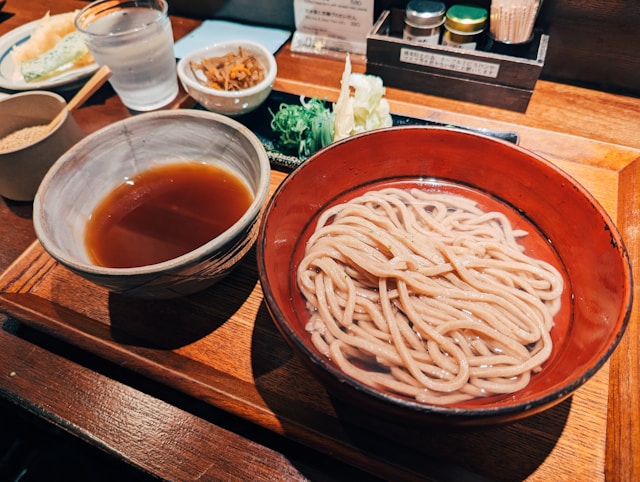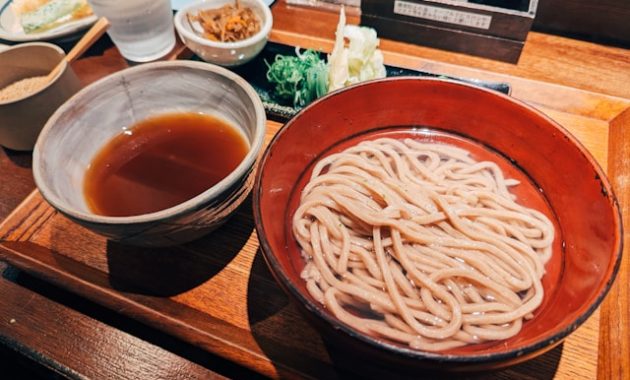
Kyoto, the cultural capital of Japan, is not only renowned for its stunning temples and gardens but also for its exceptional culinary heritage. For centuries, Kyoto has cultivated a unique food culture that reflects the city’s history, geography, and spiritual traditions. Whether you are a seasoned traveler or a first-time visitor, exploring Kyoto’s culinary offerings is essential to understanding its essence. In this guide, we will take you through the best local delicacies and unmissable dining experiences that every food lover must experience.
The Rich Culinary History of Kyoto
Kyoto’s food culture is deeply rooted in its geography and spiritual traditions. As the former imperial capital for over 1,000 years, the city developed a refined cuisine that catered to emperors, monks, and nobility. Kyoto’s position in an inland basin meant access to fresh seafood was limited, and as a result, the city’s chefs became masters at using seasonal, local ingredients and techniques such as preservation to create exquisite dishes.
One of the cornerstones of Kyoto cuisine is Kyo-kaiseki, a traditional multi-course meal that reflects the changing seasons. With its emphasis on balance, presentation, and the natural flavors of ingredients, Kyo-kaiseki has become synonymous with fine dining in Japan. The city’s Buddhist temples have also influenced its food culture through shojin ryori, a vegetarian cuisine that follows the principles of Zen Buddhism.
Must-Try Kyoto Delicacies
1. Yudofu (Boiled Tofu)
Tofu, a staple in Japanese cuisine, reaches its pinnacle in Kyoto. Yudofu, or boiled tofu, is a simple yet elegant dish that exemplifies Kyoto’s emphasis on seasonal ingredients and subtle flavors. Prepared in a light broth, Yudofu is typically served with a variety of dipping sauces, such as soy sauce and sesame. This dish is particularly popular in the colder months and is often enjoyed in temple restaurants, offering a serene atmosphere that enhances the dining experience.

2. Kaiseki (Traditional Multi-Course Meal)
For a true taste of Kyoto’s culinary heritage, one must indulge in a kaiseki meal. Rooted in the traditions of the imperial court and tea ceremony, Kaiseki is a meticulously curated dining experience that features several small, beautifully presented dishes. Each course is designed to showcase the season’s freshest ingredients, with an emphasis on natural flavors and visual harmony. From delicate sashimi to seasonal vegetables, every dish in a kaiseki meal tells a story of Kyoto’s rich culinary history.
3. Kyo-tsukemono (Kyoto Pickles)
Kyoto is famous for its Kyo-tsukemono, or pickled vegetables, which have been enjoyed for centuries as a way to preserve the bounty of the land. The city’s unique geography, with its rich soil and pure water, produces vegetables of exceptional quality. Popular varieties include shibazuke (eggplant and cucumber pickled in salt and red shiso leaves), senmaizuke (thinly sliced turnip pickles), and narazuke (white melon pickled in sake lees). Kyo-tsukemono are often served as side dishes or accompaniments to rice and are prized for their vibrant flavors and crunchy textures.
4. Shojin Ryori (Buddhist Vegetarian Cuisine)
For a taste of Kyoto’s spiritual side, we recommend trying shojin ryori, the vegetarian cuisine of Buddhist monks. This centuries-old culinary tradition is based on the principle of non-violence, with meals made entirely from plant-based ingredients. Soybeans, vegetables, and mountain herbs are the stars of shojin ryori, with dishes prepared in a way that highlights their natural flavors and textures. Many of Kyoto’s temples offer shojin ryori meals, often in serene settings that allow for quiet reflection and a deeper appreciation of the food.
5. Yuba (Tofu Skin)
Yuba, or tofu skin, is another delicacy that Kyoto has perfected. Formed on the surface of boiling soy milk, yuba has a rich, creamy texture and a delicate flavor. In Kyoto, yuba is used in a variety of dishes, from soups and stews to sashimi-style preparations. Whether served fresh or dried, yuba is a must-try for anyone interested in Kyoto’s unique tofu-based cuisine.
6. Matcha (Powdered Green Tea) and Wagashi (Traditional Sweets)
Kyoto is also the heart of Japan’s tea culture, with matcha (powdered green tea) being one of the city’s most iconic products. Matcha is traditionally used in the Japanese tea ceremony, and visitors to Kyoto can experience this ritual at tea houses throughout the city. Paired with matcha are wagashi, traditional Japanese sweets that are as visually stunning as they are delicious. Made from ingredients like sweetened red bean paste, rice flour, and seasonal fruits, wagashi are often crafted to reflect the natural beauty of the seasons.
Top Dining Experiences in Kyoto
1. Gion – A Hub for Traditional Dining
Gion, Kyoto’s historic geisha district, is home to some of the city’s most prestigious restaurants. Here, you can experience kaiseki dining at its finest, often in machiya, traditional wooden townhouses that have been converted into elegant dining spaces. Many of these restaurants have been serving kaiseki for generations, and their chefs are true artisans who take pride in preserving Kyoto’s culinary traditions.
2. Nishiki Market – The Kitchen of Kyoto
No food lover’s trip to Kyoto is complete without a visit to Nishiki Market. Known as “Kyoto’s kitchen,” Nishiki Market is a lively, bustling street filled with over 100 shops and stalls offering everything from fresh seafood to traditional sweets. Here, you can sample local delicacies like yuba, Kyo-tsukemono, and grilled skewers, as well as shop for ingredients and souvenirs to bring home. It’s the perfect place to experience the full spectrum of Kyoto’s food culture in one place.
3. Arashiyama – Dining with a View
The scenic district of Arashiyama, located on the outskirts of Kyoto, offers not only stunning natural beauty but also some exceptional dining options. Many restaurants in Arashiyama boast riverside views, allowing diners to enjoy their meal while taking in the picturesque surroundings. Traditional Japanese cuisine, including kaiseki and yudofu, is popular here, with an emphasis on using local, seasonal ingredients.
4. Pontocho – Riverside Dining
For a more casual dining experience, the narrow alley of Pontocho, located along the Kamo River, offers a mix of traditional and modern restaurants. During the warmer months, many establishments set up kawayuka, outdoor terraces that allow diners to enjoy their meal overlooking the river. Whether you’re in the mood for a traditional Kyoto meal or something more contemporary, Pontocho offers a variety of options in a charming, atmospheric setting.
Conclusion
Kyoto’s culinary landscape is a treasure trove of flavors, traditions, and dining experiences that are sure to delight any food lover. From the refined elegance of kaiseki to the spiritual simplicity of shojin ryori, the city offers a diverse array of dishes that showcase its rich cultural heritage. Whether you’re exploring the bustling stalls of Nishiki Market or savoring a tranquil meal in a temple restaurant, Kyoto’s food scene is an unforgettable journey into the heart of Japan’s gastronomic traditions.